The Cruise Lines

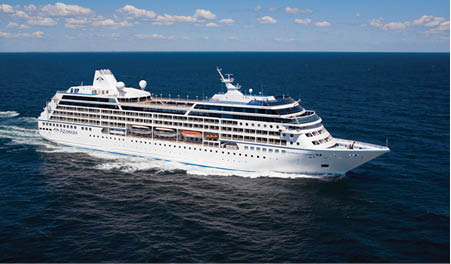
Azamara Journey (2007)
866 passengers, 30,000 tons
AZAMARA CLUB CRUISES: This upscale brand (founded by Celebrity Cruises in 2007) operates mid-sized boutique ships offering a country-club ambiance and all-inclusive cruise fares. Azamara’s interesting itineraries feature an abundance of overnight port stops with customized evening tours. Cruises covering Northern and Western Europe range from eight to 14 nights. (azamaracruises.com)
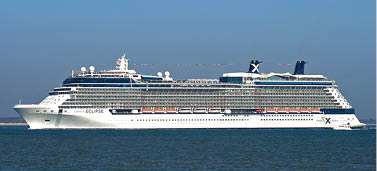
Eclipse (2010)
2,850 passengers, 122,000 tons
CELEBRITY CRUISES: Founded in 1990 by the Greek cruise line Chandris Inc., Celebrity Cruises is now owned by Royal Caribbean Cruises Ltd. and is a premium brand offering gourmet cuisine, sophisticated service and trendsetting ships appointed with modern art. Celebrity’s large-ship amenities include an extensive range of staterooms and programs for children. Celebrity’s European base ports include Amsterdam, Stockholm and Southampton. City stays can be added to some itineraries. Officers are Greek; service staff is international. (celebritycruises.com)
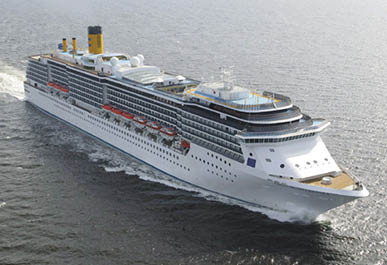
Costa Mediterranea (2003)
2,114 passengers, 86,000 tons
COSTA CRUISES: Founded by a Genoa shipping family in the 1800s, Costa introduced their first passenger ship in 1948. Costa’s style is upbeat, with an international ambiance and authentic Italian cuisine. Costa’s Northern Europe cruises visit the Baltic and Norwegian fjords from the base ports of Copenhagen and Hamburg. Officers and service staff are international. (costacruises.com)
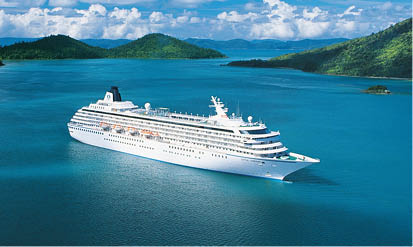
Crystal Symphony (1995)
960 passengers, 51,000 tons
CRYSTAL CRUISES: This all-inclusive, luxury cruise line operates mid-sized ships which are spacious, beautifully appointed and offer an easygoing elegance. Crystal’s Europe itineraries range from five- to 24-nights duration and feature signature shore excursions. Turn-around ports include London, Stockholm and Copenhagen. Officers are Scandinavian; service staff is international. (crystalcruises.com)
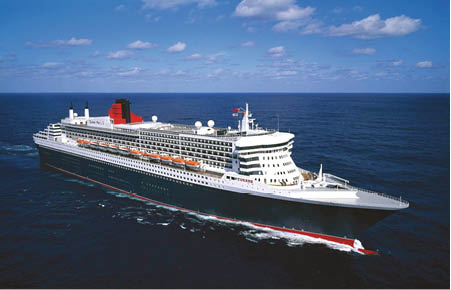
Queen Mary 2 (2004)
2,620 passengers, 150,000 tons
CUNARD: This prestigious British line began operations in 1840 when Sir Samuel Cunard, a Canadian pioneer of regular transatlantic navigation, formed a fleet of four ships to deliver mail between Liverpool and Boston. Now owned by Carnival Corporation, Cunard currently operates three classic liners offering traditional elegance and British ambiance. Southampton is Cunard’s main base port for a variety of Northern Europe itineraries covering the Baltic, fjords of Norway and British Isles. Round-trip cruises are also offered from Hamburg. Officers are Norwegian and British; service staff is international. (cunard.com)
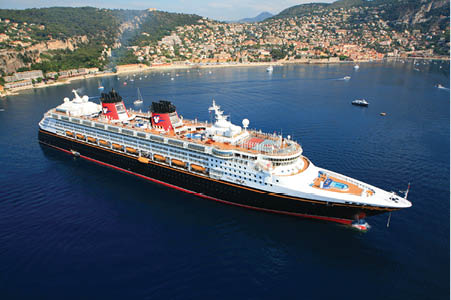
Disney Magic (1998)
1,750 passengers, 83,500 tons
DISNEY CRUISE LINE: This family-oriented cruise line debuted in Europe in 2007. Disney’s premium ships combine traditional ocean liner opulence with elements of fun associated with their storybook characters. Shore excursions are customized to appeal to children and adults. Copenhagen and Dover are turnaround ports for cruises to the Baltic, Norwegian fjords and Iceland. Officers are European. (disneycruise.com)

Zuiderdam (2002)
1,848 passengers, 82,000 tons
HOLLAND AMERICA LINE: This Seattle-based premium cruise line commands a loyal following, its spacious ships offering traditional features such as teak promenade decks and public areas decorated with Dutch paintings and antiques. HAL’s mid-sized ships offer amenities and activities for all age groups, including children, and are popular with multi-generational family groups. In business since 1873, HAL operated transatlantic service between Rotterdam and New York for decades before turning to cruises in the late 1960s. HAL offers an extensive range of itineraries from the base ports of Harwich, Amsterdam, Rotterdam, Copenhagen and Stockholm. Pre-cruise land tours are also available. Officers are Dutch; service staff is Indonesian and Filipino. (hollandamerica.com)

Midnatsol (2003)
1,100 passengers, 16,140 tons
HURTIGRUTEN: This company was once southern Norway’s only link to the remote fjords and coastal communities of western and northern Norway. Known as Hurtigruten (“the express route”) because its steamship service was much faster than travelling overland, the company began launching larger and more luxurious ships in the 1980s to cater to the growing tourist market. Today, Hurtigruten’s fleet of ships offers year-round cruises of the entire Norwegian coastline north of Bergen. Expedition cruises to the Antarctica are also offered, as are cruises of Greenland and Iceland. (hurtigruten.com)

MSC Musica (2006)
2,550 passengers, 89,000 tons
MSC CRUISES: An Italian line, MSC’s mid-sized ships appeal to experienced travellers who prefer traditional cruise liners. The MSC Yacht Club is an exclusive suite enclave within the ship. Cruises depart from a variety of ports – Copenhagen, Hamburg, Kiel and Warnemunde (Berlin). The mix of passengers is international. Officers and service staff are Italian. (msccruises.com)
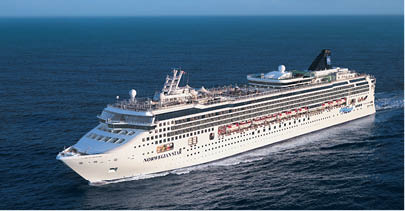
Norwegian Star (2001)
2,240 passengers, 91,000 tons
NORWEGIAN CRUISE LINE: One of the first lines to invent modern cruising in the mid-1960s, Miami-based NCL remains innovative with its fleet of contemporary ships offering unstructured dining, a casual atmosphere and good youth facilities. From the base ports of Copenhagen andSouthampton, NCL’s itineraries cover the Baltic, Norwegian fjords and British Isles. Officers are Norwegian; service staff is international. (ncl.com)

Regatta (1998)
684 passengers, 30,000 tons
OCEANIA CRUISES: This upscale line’s mid-sized ships offer gourmet cuisine and attentive service in a country-club casual atmosphere. A range of one-way and roundtrip cruises are offered from various base ports, including Southampton (London), Amsterdam, Oslo, Copenhagen and Stockholm. Officers and service staff are international. (oceaniacruises.com)

Ventura (2008)
3,090 passengers, 113,000 tons
P&O CRUISES: P&O appeals to the British holidaymaker with its family-friendly and adults-only ships. Formerly a division of the Peninsular & Oriental Steam Navigation Company, P&O has been operating passenger ships since the early 1800s and is now owned by Carnival Corporation. Based in Southampton, P&O’s fleet offers a variety of roundtrip cruises to the Baltic and fjords of Norway. (pocruises.com)
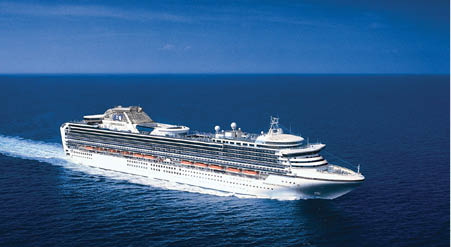
Emerald Princess (2007)
3,100 passengers, 113,000 tons
PRINCESS CRUISES: This premium cruise line, based in Greater Los Angeles, appeals to a broad range of passengers with ships featuring elegant decor, excellent childrens facilities and flexible dining options. Northern Europe cruises depart from Copenhagen and the British base ports of Dover and Southampton. Princess also offers several land tours in combination with a cruise, covering such areas as Paris and the French countryside, and southern Ireland’s famous Ring of Kerry. Officers are British and Italian; service staff is international. (princess.com)
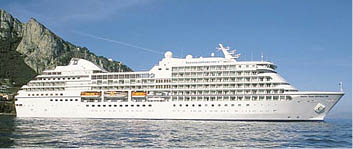
Seven Seas Voyager (2003)
708 passengers, 42,000 tons
REGENT SEVEN SEAS: This all-inclusive luxury line (formerly Radisson Seven Seas) offers small-ship intimacy and gourmet cuisine. Northern European itineraries are baseported in Copenhagen, Stockholm and Southampton (London). Officers are Scandinavian; service staff is European. (rssc.com)
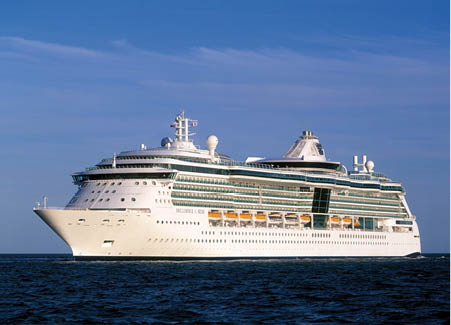
Serenade of the Seas (2003)
2,100 passengers, 90,000 tons
ROYAL CARIBBEAN INT’L: This contemporary line, based in Miami, operates handsome megaships with a relaxed, upbeat atmosphere and excellent childrens facilities. The funnel of each ship features a rock-climbing wall on its aft side, which has become the company’s trademark. RCI offers a variety of itineraries from the base ports of Harwich, Southampton, Copenhagen and Stockholm. Extended land tours of London and Paris are also offered. Officers are Scandinavian; service staff is international. (royalcaribbean.com)
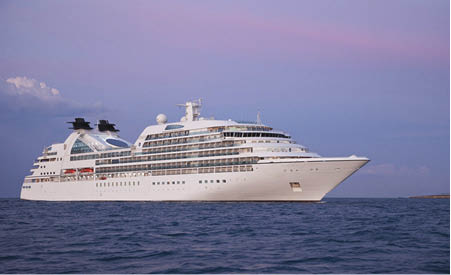
Seabourn Quest (2010)
450 passengers, 32,000 tons
SEABOURN CRUISE LINE: This luxury line of small ships offers gourmet cuisine, spacious all-suite accommodations and personalized service. Northern Europe itineraries include calls at less-visited ports and customized shore excursions. Base ports include Dover, Stockholm and Copenhagen. Officers and service staff are Norwegian, European and American. (seabourn.com)

Silver Whisper (2001)
382 passengers, 28,250 tons
SILVERSEA: This highly-rated luxury line offers a handful of unique Northern Europe itineraries that call at less-visited ports. Officers are Italian; service staff is European. (silversea.com)
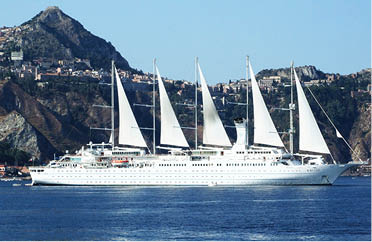
Wind Surf (1998)
310 passengers, 14,750 tons
WINDSTAR: This is a premium line of high-tech sailing ships which appeal to clients seeking both relaxed luxury and the romance of sail. Seattle-based Windstar has also acquired three small luxury ships formerly operated by Seabourn Cruises. Windstar itineraries often include small, less-visited ports of call and utilize the base ports of Edinburgh, Dublin, Copenhagen, Stockholm and Reykjavik. Officers are British and service staff is international. (windstarcruises.com)
NICHE CRUISE LINES based in Britain include Voyages of Discovery and Swan Hellenic, both offering cultural/historical itineraries aboard refurbished ships carrying 350 to 700 passengers.
Hebridean Island Cruises offers small-ship luxury cruises around the British Isles. (Queen Elizabeth chartered the Hebridean Princess in 2006 for a family cruise to celebrate her 80th birthday.)
Family-owned Fred.Olsen Cruise Lines offers a British country house atmosphere and traditional cruising on its small- to mid-sized ships.
Viking Cruises, well known for its river cruises, has entered ocean cruising with the launch of several new small ships featuring Baltic itineraries that are destination focused.